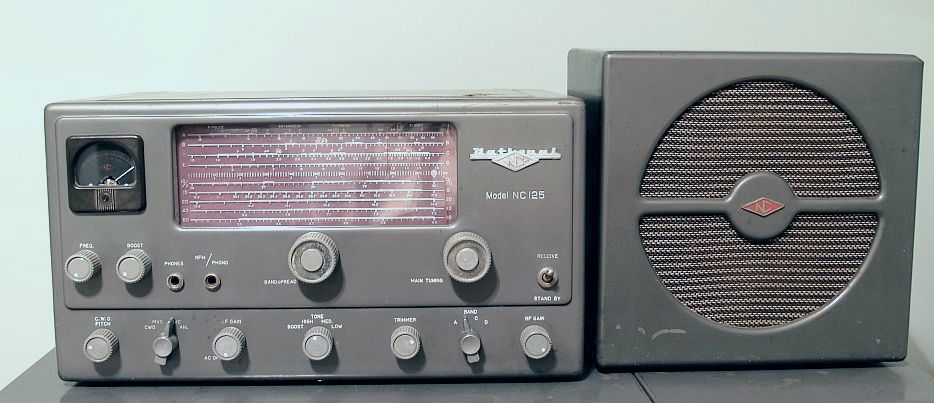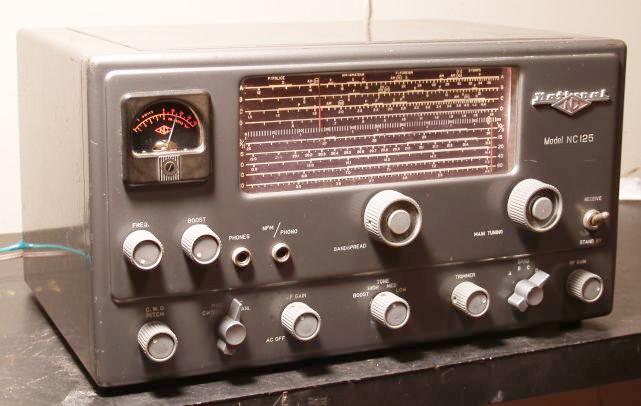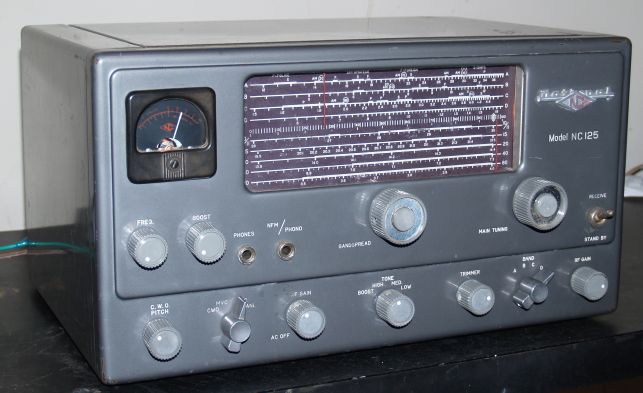
The radio employs a voltage regulator tube to miminize frequency drift in the high frequency and beat frequency oscillators. The separate bandspread control knob and linear logging dial scale makes posible fine, vernier-type tuning for any portion of the frequency spectrum covered by the receiver. The frequency coverage of the receiver is:
Band A: 12 to 35 Mc
Band B: 4.4 to 12 Mc
Band C: 1.55 to 4.4 Mc
Band D: 0.56 to 1.55 Mc
The bandspread scales are:
Band A (10, 11 Meters): 27.16 to 29.7 Mc
Band A (15 Meters): 21.0 to 21.5 Mc
Band A (20 Meters): 14.0 to 14.4 Mc
Band B (40 Meters): 7.0 to 7.3 Mc
Band C (80 Meters): 3.5 to 4.0 Mc
Below is a close up picture of the radio with it on so you can see the dial and signal strength meter illuminated.
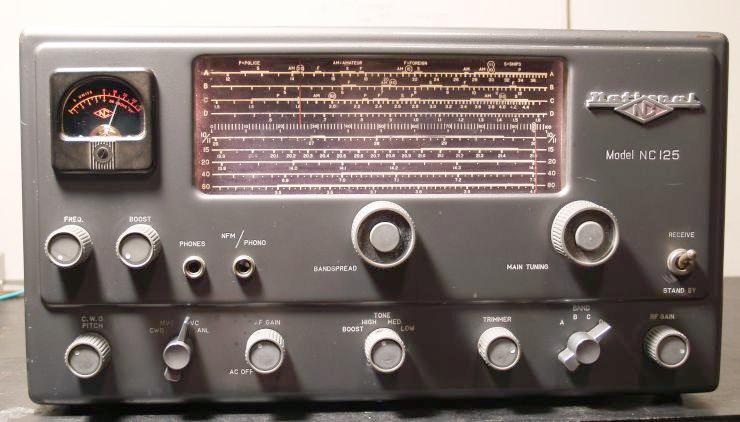
Two small knobs were missing on my radio when I purchased it. I replaced them with two knobs from a National Model NC-98 radio. Those knobs had a red dot (as opposed to a white dot) and they were push-on rather than having a setscrew. I painted the red dot white and they look great and almost original on this radio. The knobs I replaced are the two immediately below the signal strength meter.
The radio was quite dirty when I received it. The copper-plated chassis had a lot of grime and corrosion as can be seen in the picture below.
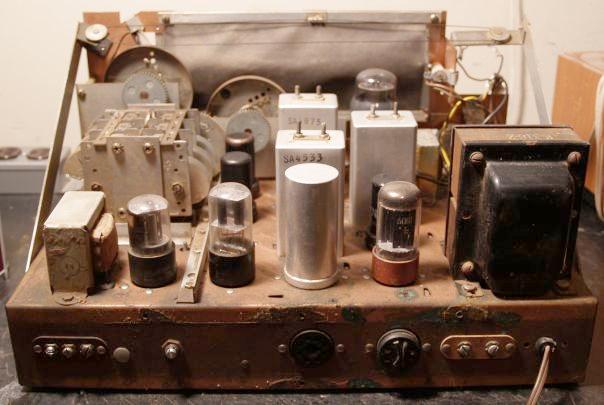
I cleaned up the chassis as best I could and the result is below.
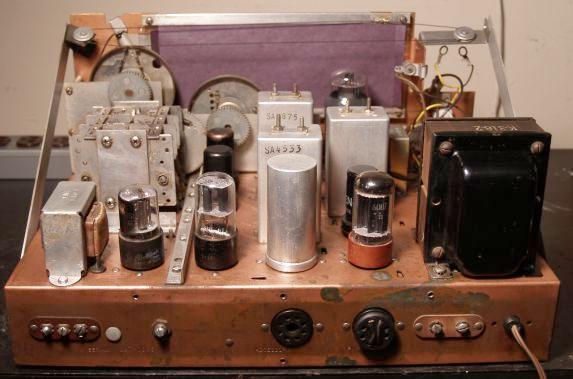
The underside of the chassis was fairly clean. I did not have to clean it up much. It is shown below.
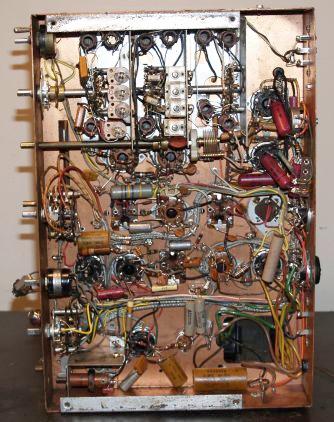
After cleaning the radio, I aligned it and it works well. However, the RF preselector filter for Band A appears to be tuned to the image at the low end of the band rather than to the fundamental thereby making alignment at the low frequency end impossible. When I received the radio, it had an incorrect oscillator/mixer tube and the low end of Band A would not work. After replacing the tube with the correct one, the radio works entirely across Band A.
The radio will receive SSB with the "CWO" included. When using the "CWO", commonly known now as a beat frequency oscillator (BFO) the automatic volume control (AVC) is inactive and you have to ride the gain using the RF gain control so that the received signal does not overwhelm the CWO. When the gains are properly set, the receiver works well on both CW and SSB.
| Here is an advertisement for the National NC-125 receiver. This advertisement is from the December 1952 QST magazine. QST is a magazine published by the Amateur Radio Relay League (ARRL). Note that the radio sold for $149.50. | 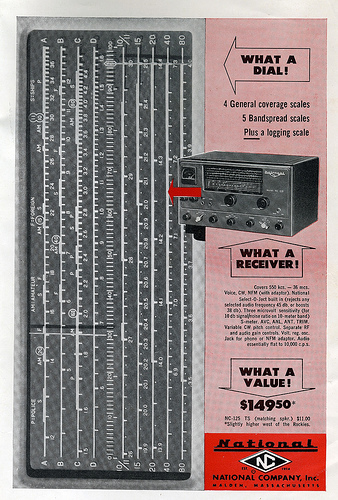 |
I also have a matching speaker for the radio. The radio and speaker are shown below.
